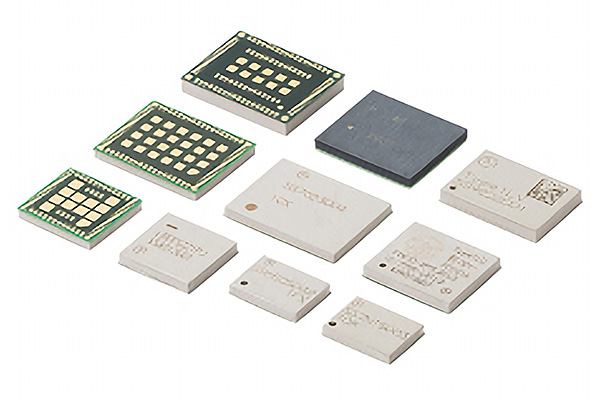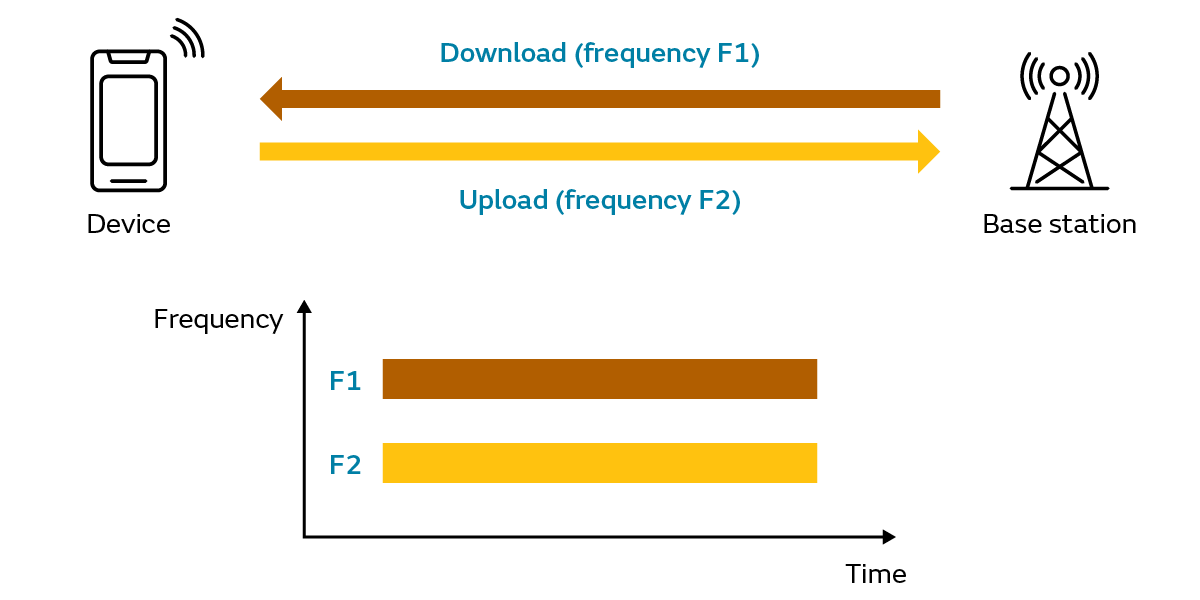Wi-Fi® Modules / Wi-Fi®+Bluetooth® Modules


INDEX: FDMA, TDMA, and CDMA Multiple Access (1)
1. Essential Technologies that Enable Effective Utilization of Signal Bandwidth for Wireless Communication
2. Transmission of Multiple Data Streams by Wireless Communication
3. How Multiple Access Works: FDMA, TDMA, and CDMA
4. Summary
INDEX: FDMA, TDMA, and CDMA Multiple Access (2)
< Column > How Multiplexing Works: FDM, TDM, and CDM
< Column > Explanation of the Terms FDD-LTE and TD-LTE Found in Smartphone Technical Specifications
Supplementary information related to FDMA, TDMA, and CDMA Multiple Access (1) is presented below.
A number of types of multiplexing are used for wireless communication, and the following are some of the most common:
• Frequency-division multiplexing (FDM)
• Time-division multiplexing (TDM)
• Code-division multiplexing (CDM)
Figures 7-1, 7-2, and 7-3 are conceptual diagrams of these multiplexing techniques, with a focus on the transmission path portions enclosed in red dashed lines.



Frequency-division multiplexing (FDM) is a multiplexing technology that assigns multiple data streams to different frequency bands, and transmits the frequency bands as channels simultaneously via a single transmission path.
Figure 7-1 shows a general conceptual diagram of FDM. On the sending side, the frequency bands assigned to the multiple data streams are treated as channels, which are sent via a single transmission path using multiplexing. On the receiving side, the transmitted data streams are extracted by devices capable of selecting specific frequency bands.
An example of the use of FDM for wireless communication is terrestrial digital television broadcasting in Japan. There is a single transmission path, the air, and signals containing image and audio data are broadcast from multiple television stations on different frequencies. On the receiving side, the user can view TV shows of their choice by selecting specific frequencies. FDM is also used for analog radio broadcasting.
Time-division multiplexing (TDM) is a multiplexing technology that divides up multiple data streams into time intervals assigned as channels, and transmits them on the same frequency via a single transmission path.
Figure 7-2 shows a general conceptual diagram of TDM. On the sending side, multiple data streams from a device are divided into time slots and assigned to channels, which are sent via a single transmission path using multiplexing. On the receiving side, by dividing up the channels using the same timing as the sending, the transmitted data can be received by multiple devices.
An example of the use of TDM for wireless communication is television broadcasting in Europe and North America.
Code-division multiplexing (CDM) is a multiplexing technology that mixes with the data unique identifier codes for each device, combines the signals in a single frequency band, and then transmits the combined signals simultaneously via a single transmission path.
Figure 7-3 shows how CDM works. The data is mixed (modulated) with periodic identifier codes that have a duration shorter than that of one bit of data to generate a modulated signal.*8 The multiple modulated signals from each device are added together as is, multiplexing them, and the multiplexed signals are sent via a single transmission path. On the receiving side, each device mixes in with the multiplexed signals the identifier codes used for modulation to restore (demodulate) the data and extract the transmitted data.
There are no examples of the use of CDM as a standard for wireless communication, but adoption of the related multiple access scheme called code-division multiple access (CDMA) is widespread.
*8 During transmission, the frequency bandwidth of the modulated signal ends up being wider than that of the original data stream (original signal). This characteristic provides advantages for communication applications, such as greater tolerance for external noise impinging on the transmission path.
Sending and receiving take place simultaneously during mobile communications on smartphones or flip phones and phone calls on landline telephones, with a single channel being used for bidirectional transmission of audio data. Such bidirectional transmission can also be thought of as a type of multiplexing technology.
Terms such as “FDD-LTE” and “TD-LTE” (TDD-LTE is typically shortened to TD-LTE) often appear in the technical specifications of products such as smartphones. FDD stands for “frequency-division duplex” and TDD stands for “time-division duplex,”*9 both of which refer to bidirectional transmission.
Long-term evolution (LTE), on the other hand, is the telecommunications standard of the 4th generation mobile communication system (4G), and this also includes multiple access (OFDMA in the case of 4G). Therefore, “FDD-LTE” indicates both bidirectional transmission and the multiple access scheme used.
It is somewhat complicated, but bidirectional transmission is not equivalent to multiplexing, so it is typical when writing about multiple access, which utilizes both bidirectional transmission and multiplexing, to mention the two separately.
*9 FDD stands for “frequency-division duplex,” in which different frequencies are assigned to downloading (receiving of data by the device) and uploading (sending of data by the device) in order to implement bidirectional transmission (Figure 8-1).
On the other hand, TDD stands for “time-division duplex,” in which the same frequency band is used for both downloading and uploading, the audio data is split up along the time axis, and sending and receiving of voice data alternates at very short intervals (on the order of milliseconds in the case of voice calls) in order to implement bidirectional transmission (Figure 8-2). Thus, strictly speaking, TDD does not provide simultaneous sending and receiving, although this results in no unnatural audible effects in the case of voice calls.
Bidirectional transmission is explained in more detail at Basic Knowledge of Wireless Communication: Wireless Mechanism (2).


INDEX: FDMA, TDMA, and CDMA Multiple Access (1)
1. Essential Technologies that Enable Effective Utilization of Signal Bandwidth for Wireless Communication
2. Transmission of Multiple Data Streams by Wireless Communication
2.1 Multiplexing: Effective Utilization of a Single Transmission Path (Air)
2.2 Multiple Access: Implementing Wireless Communication among Multiple Users without Interference
3. How Multiple Access Works: FDMA, TDMA, and CDMA
3.1 Frequency-Division Multiple Access (FDMA)
3.2 Time-Division Multiple Access (TDMA)
3.3 Code-Division Multiple Access (CDMA)
4. Summary